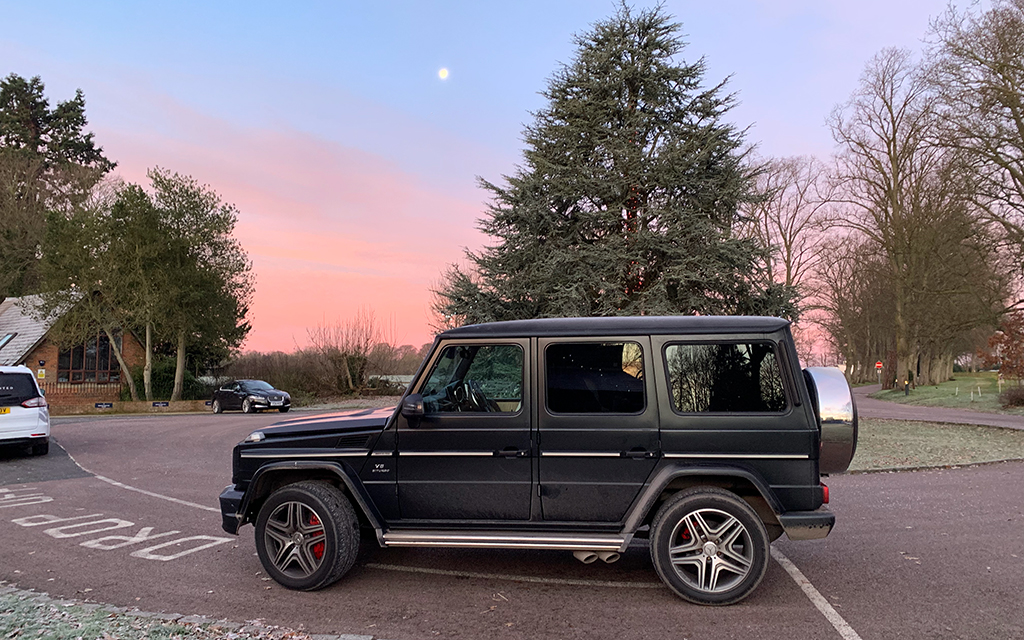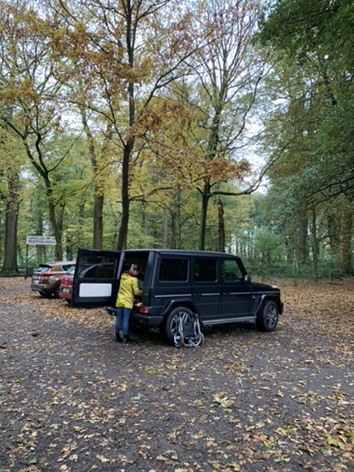As I’ve gotten older I’ve collected two useful things: clearer sight of my blind spots and a conviction that self‑knowledge needn’t arrive wrapped in academic language. My blind spots aren’t the metrics a business dashboard spits out; they’re recurring personal habits that only reveal themselves in quiet, retrospective moments. For me they look straightforward and stubborn: a tendency to overthink, a habit of taking on too much, an urge to please that sometimes compromises my own principles, an excess of politeness that bottles frustration, and an unexplained tendency to be swayed by my wife’s opinions despite my protestations of objectivity.
One of those blind spots led directly to the purchase of our G‑Wagon, and the experience taught me that some blind spots aren’t problems to be excised but lenses to be acknowledged, channelled, and repurposed.
I had always filed the G‑Wagon under “Knightsbridge vanity 4×4”: ostentatious, impractical, and favoured by celebrities and footballers. It seemed the last car a growing family should buy. We were replacing an X3; adding a second car seat looked tight and daily practicality suddenly mattered in a way it hadn’t before. My shortlist included the sensible suspects—X5, Q7, Cayenne—plus the occasional left‑field choice. I’d assumed the role of resident petrolhead and was steering the decision until my wife exercised her right to choose the “fun” family car.
She chose the G. Not because she’d been researching Mercedes technical manuals, and not because she’d been converted to a Kardashian lifestyle expert, although one suspects the Kardashians do make a persuasive visual case for certain aesthetics. She simply knew what she liked and moved quickly. Her choice forced me to be exposed to a perspective I’d historically resisted, and that exposure was, oddly, a design feature rather than a defect.
Practicality won me over. The G‑Wagon’s boxy silhouette isn’t a retro affectation; it’s functional pedigree. Where many SUVs sacrifice usable boot space to aerodynamic slopes, the G’s boot remains a near‑perfect cube: luggage, a travel parrot cage for Bobby (our parrot), and an entire arsenal of child paraphernalia fit without contortions. For parents, the capacity to swallow redundant nappies, bottles, prams, changes of clothing and an alarming number of soft toys is not glamorous, it’s decisive. Bobby the parrot took to the boot like a seasoned traveller; calm, opinionated, and entirely unimpressed by celebrity endorsements.
My initial plan was a diesel G350: the right balance of practicality and provenance without the supercar heartaches of an AMG. The universe disagreed charmingly when a six‑month‑old AMG G63 in a chameleonic Designo Night Black Matte Magno, appeared at the same dealer. What began as pragmatic research slid, with surprising ease, into affection and desire.
 DC Herath
DC Herath It was love at first sight and our family’s romance with Bertha has never really ended.
Driving the car 255 miles back from the dealer, it felt like finding a favourite glove. The high seating gave confident visibility and the vehicle’s mass translated into composure rather than awkwardness. What once felt like agricultural engineering has since been softened by suspension updates, and technologies such as distronic cruise control earned my trust once I allowed them to manage the braking on the motorway. The hand‑built AMG engine proved resolute over nearly 49,000 miles; small scares like a suspected oil leak resolved themselves or failed to materialise.
We treated the car with reverence. It survived school runs, coast trips, and became a staging area for family life: a changing room, a shelter in driving rain, a picnic bench in summer sun. Matte paint has consequences; one scratch meant a full panel respray, this thankfully only happened once in 4 years. The interior, even with three car seats jammed across the rear bench, stayed immaculate.
 DC Herath
DC Herath Bertha was put to work for our family, she wasn’t just utilitarian, she always put a smile on the face of whoever was driving her.
Principle ultimately required us to move toward electric, so we replaced Bertha with a Mercedes EQV, sublime to the ridiculous? It turned out not so but more of that elsewhere. The children were distraught; we fibbed that Bertha was “going to get an electric engine.” Bobby the parrot was indifferent in the existential way parrots are; he continued to offer loud, well‑timed commentary. The kids still count her when you ask how many cars we have.
The final twist was financial: we sold Bertha for almost £30,000 more than we paid. Timing and desirability conspired in our favour, which felt like a small reward for a car that had become part of the family.
Bertha taught me a couple of simple lessons: blind spots aren’t always liabilities to be surgically removed. Some are perspective shifts waiting to be explored. Let a partner’s quick taste cut through your protracted thinking. Sometimes a supposedly ostentatious object will behave like an undeniably useful member of the household, and that’s when a little humility and a good boot big enough for Bobby goes a long way.
|SUPPLEMENTAL
This is Bertha against the new Bertha. I so very much miss the guttural V8 sound, it is very distinctively Mercedes AMG.






